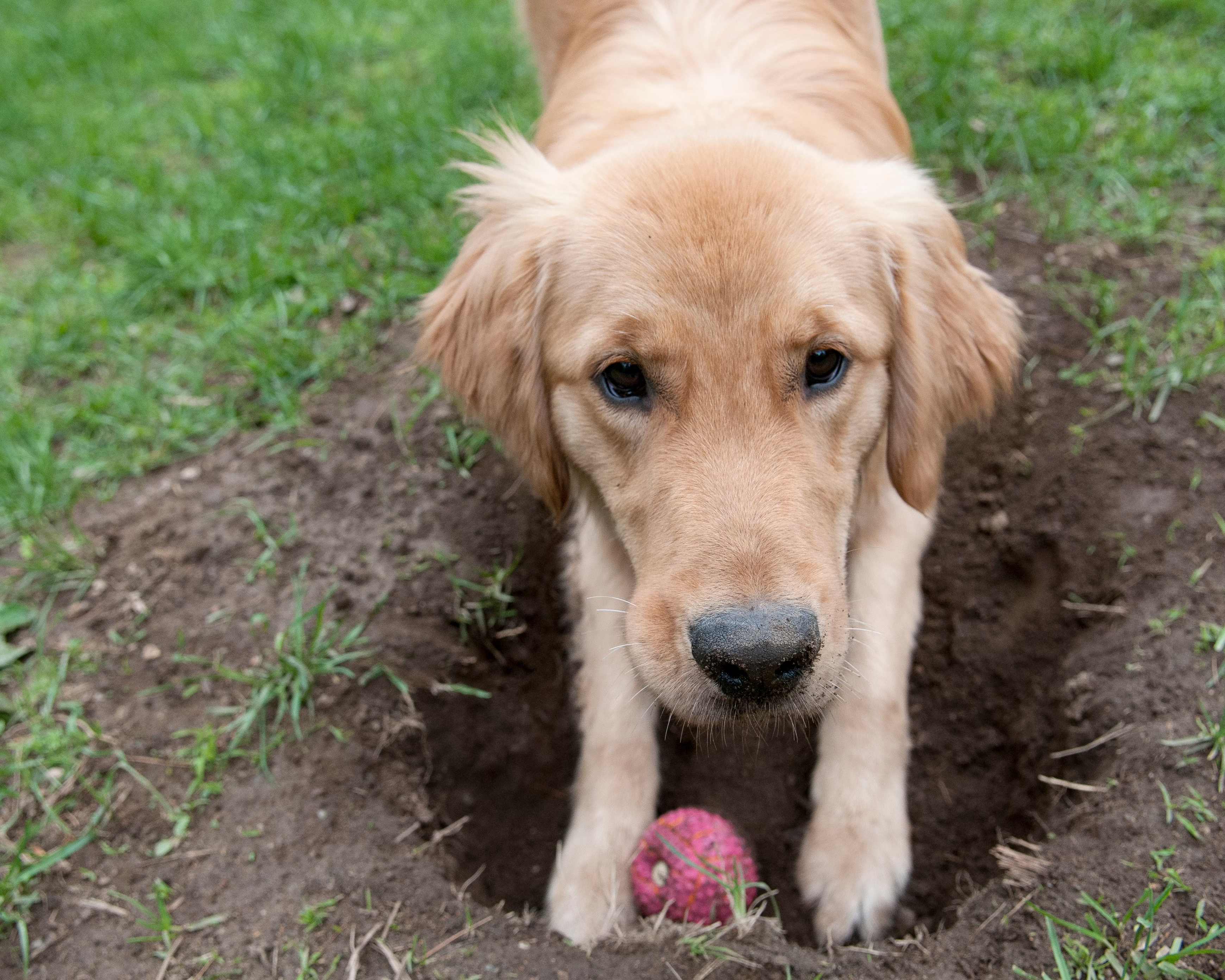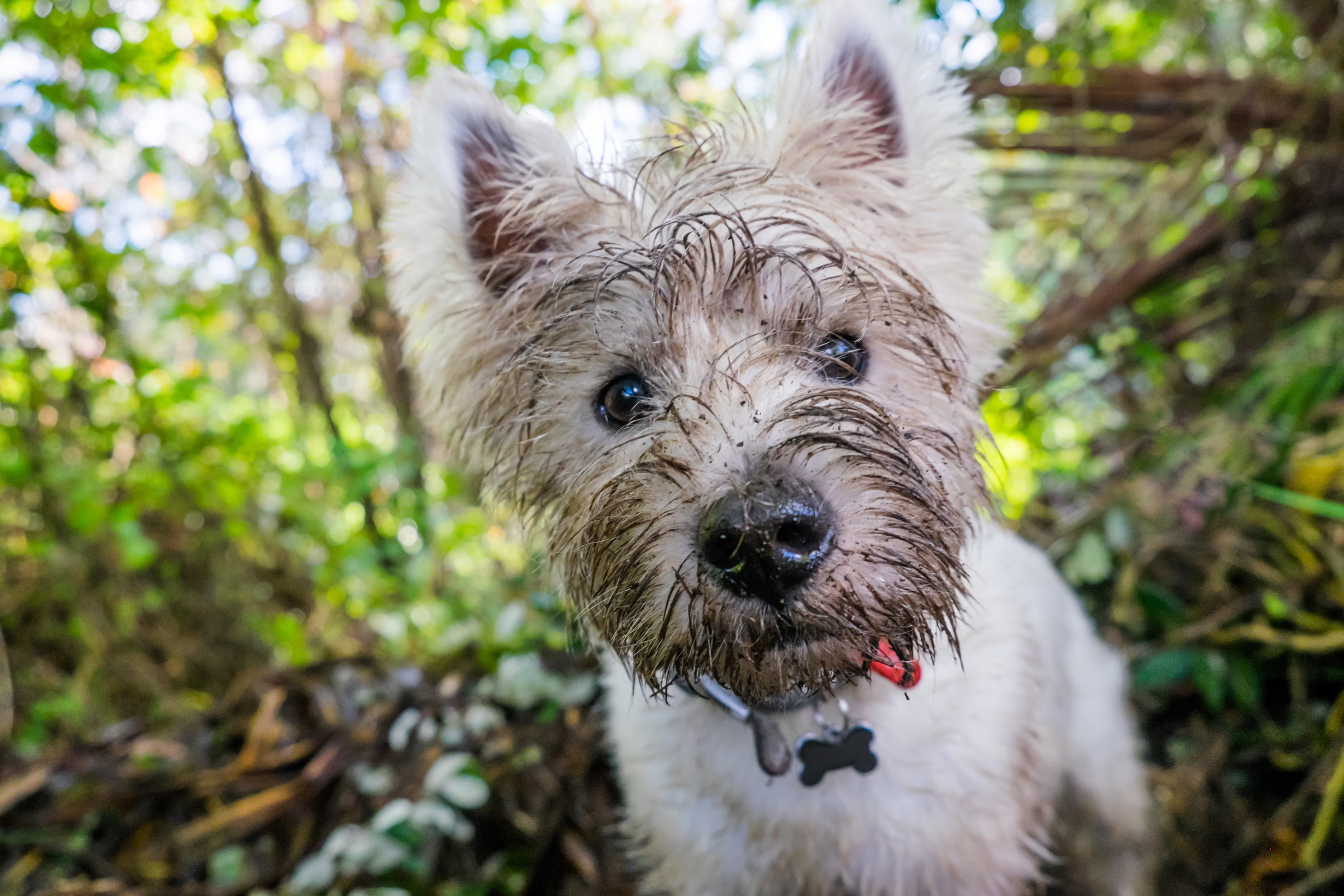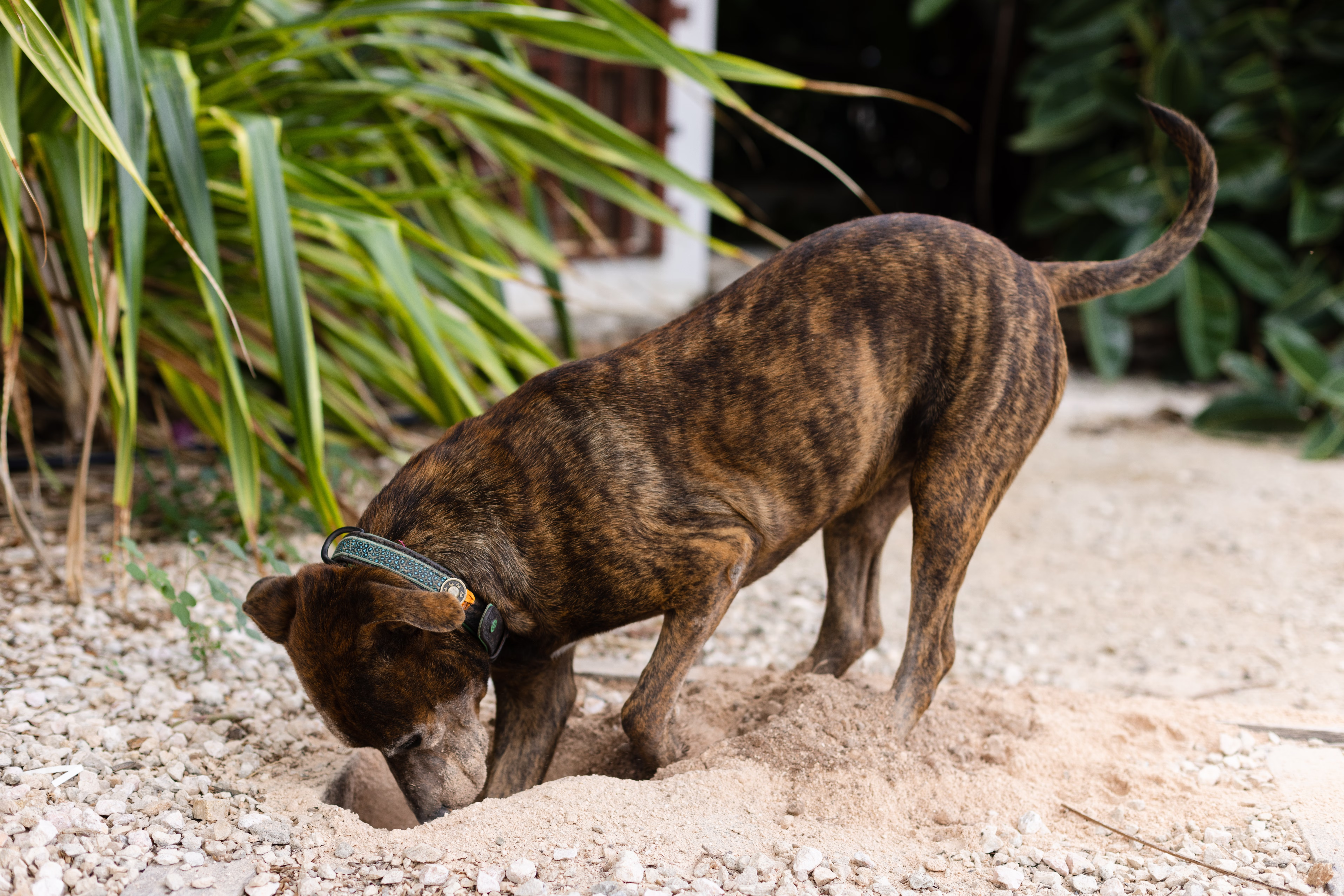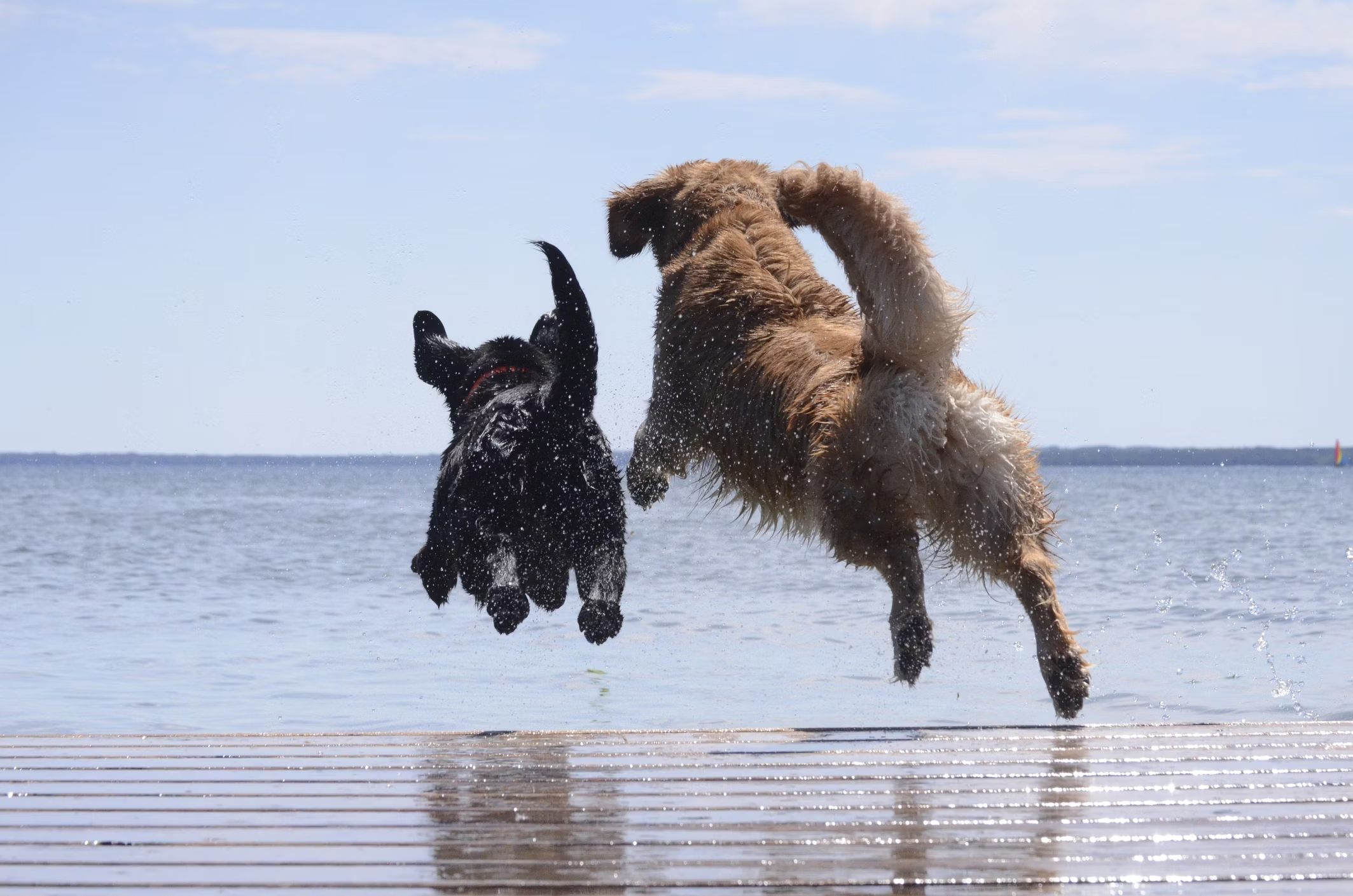Digging is a natural behavior for dogs, but not one pet parents always appreciate. After all, it can be frustrating to walk out to the yard and find that your dog has turned your flower beds into a patchwork of holes and dirt mounds. Or even worse, digging can be dangerous if it leads to your dog burrowing under a fence and escaping.
The first step in trying to manage digging is to understand why it happens, including how breed dispositions can play a role. You may not be able to stop a dog from digging entirely, but once you know the root cause, there are steps you can take to find a balance that works for you and your pup. Let’s dig in.

The "why" behind a dog’s digging
The short answer to why dogs dig: because it’s what dogs do! This instinct traces back to their wolf ancestors and is as natural to dogs as sniffing, chewing, or wagging their tails. Some dogs dig a lot while others only dig occasionally, but there’s typically a trigger that causes them to initiate the behavior. Here are the most common reasons dogs dig.
To hunt for prey
Some dog breeds, particularly those in the terrier breed group, were bred to hunt burrowing prey like rodents and rabbits. These dogs are driven to dig in search of these small animals—an innate behavior that persists even if a dog has never served as a hunter’s companion.
To regulate their temperature
Dogs don’t sweat like humans, so they have to find other ways to regulate their body temperature. Digging is one of the ways they do this. In hot weather, digging into the cool earth can help them create a comfortable resting spot. On the flip side, some dogs may dig to create a warm burrow in cold or snowy conditions. Arctic breeds, like Siberian Huskies and Alaskan Malamutes, are prone to this behavior.
To reduce boredom or anxiety
Dogs need physical exercise and mental stimulation in order to thrive. If they aren’t getting enough of one or both, they can get bored or anxious. Digging provides a form of entertainment or stress relief and can be especially common in intelligent, high-energy breeds.
To go on an adventure
Some dogs dig to try to escape their yard. Boredom could again play a role, or a dog may hear or smell something on the other side of the fence that they want to explore.
To bury valuable items
In the wild, dogs often bury food to keep it safe for future consumption. Domestic dogs may bury items they consider valuable (a bone, a toy, or your favorite shoe) so they can use it again at a later day—providing they can remember where they hid it.
To make a comfy sleeping spot
Does your dog dig at blankets or pillows in order to create the perfect napping spot? This behavior is called nesting. Nesting is a way for wild dogs to remove stones or sticks from an area to create a comfy place to sleep. Many dogs do this today, but don’t limit the behavior to the outdoors. Couches, beds, and other furniture are all fair game for nesting. This is one of the behavior traits Wisdom Panel tests for in our dog DNA tests, so you can learn if your dog has a predisposition nesting.
To create a cozy spot for their puppies
Some dogs, particularly livestock guardian breeds, dig to create dens that are suitable for giving birth to their litters.

Dog breeds known for digging
Some breeds are more prone to digging than others due to their genetic history. If your dog seems to have an unstoppable urge to dig, their DNA might hold the key to understanding why. Here are a few breeds known for their digging tendencies:
Jack Russell Terriers
As mentioned, breeds in the terrier group are skilled at hunting animals that burrow underground. The Jack Russell Terrier’s small, agile body and tenacious personality help them excel when digging to root out prey.
Dachshunds
Another breed in the terrier group, Dachshunds were bred to chase and flush out badgers. Their short, powerful legs and large front paws are useful tools for their digging adventures.
Beagles
Beagles have an exceptional sense of smell and were commonly used to hunt rabbits. So it’s no surprise that these hound dogs are often seen with their nose to the ground or digging holes in search of small animals.
Siberian Huskies
Siberian Huskies are known for their digging habits, but for a different reason than terriers and hounds. These cold-weather pups may dig holes to find cool spots when in hot climates and warm spots when in the ice and snow.
Alaskan Malamutes
Similar to the Husky, Alaskan Malamutes may dig for temperature control reasons, burrowing their way to a napping spot that’s just right.
Lagotto Romagnolos
The Lagotto Romagnolo is the premier truffle-hunting breed. And since truffles are found buried in the dirt, it’s no surprise that the pups have a strong drive to dig.
Border Collies
Border Collies are smart, high-energy dogs that like to have a job to do. If they get bored, they will take it upon themselves to find ways to "help" around the house or yard. Digging often makes its way to their to-do list.
Anatolian Shepherd
Anatolian Shepherds are livestock guardian dogs that are used to spending time outdoors and in the pastures. Digging is one way they can make a comfy spot to nap when they’re with their herds or to give birth to their pups.

How to manage a dog’s digging instincts
Because it’s a core behavior for a dog, the ideal goal isn’t to prevent dogs from digging. Instead, focus on meeting your dog’s exercise and enrichment needs and redirecting their digging to appropriate outlets. Here are some practical solutions you can try to address your dog’s digging.
Provide an appropriate digging area
One way to stop dogs from digging up your lawn or garden is to give them a designated digging zone. A sandbox filled with loose soil or sand is a great solution. Bury toys or treats in the box to encourage your dog to dig there instead of in unwanted areas.
Increase mental and physical exercise
Ensuring your dog gets plenty of exercise through daily walks, playtime, and training sessions can reduce a dog’s desire to dig. High-energy breeds may benefit from activities like agility training or herding exercises.
Use puzzle toys and scent games
Dogs love to use their noses, and engaging them in scent-based activities can be a great distraction from digging. Puzzle toys filled with treats or scent games that involve hiding rewards around the house can keep them mentally stimulated. And snuffle mats that allow dogs to root around to find treats encourage both sniffing and mild digging.
Upgrade your fence to prevent escape
If your dog digs near fences in an attempt to escape, it may be time to reinforce your yard’s perimeter while you work on prevention strategies. The best fence for dogs that dig is one that reduces their ability to tunnel out. Options include:
- Installing a dig guard (a mesh barrier buried along the fence line)
- Using concrete edging to block digging attempts
- Bury the bottom of a metal fence below the ground
Final thoughts
For dogs, digging isn’t a bad habit. It’s a natural behavior that’s influenced by genetics and environmental factors. A DNA test can help you determine if your dog’s breed mix includes breeds known for digging. And by paying close attention to when your dog digs (e.g., when they are left home alone for long periods) you can pick up clues into what’s driving the behavior. The more you understand about your dog, the easier it will be to develop a plan to manage their behavior effectively.














